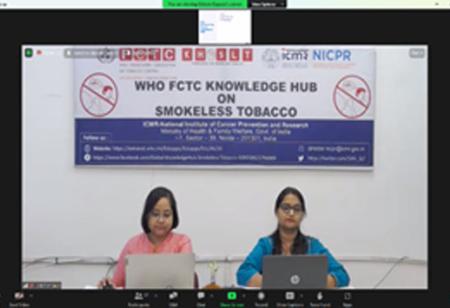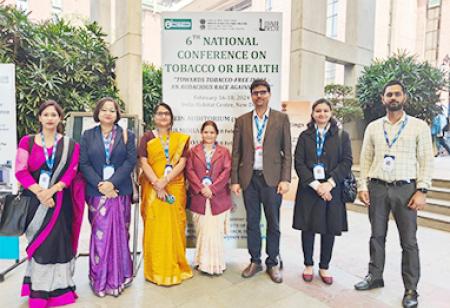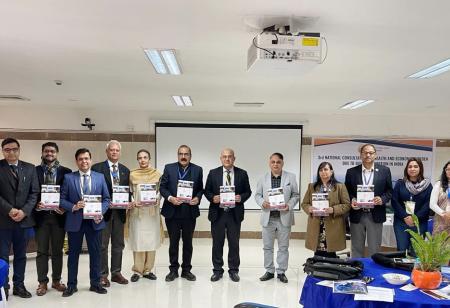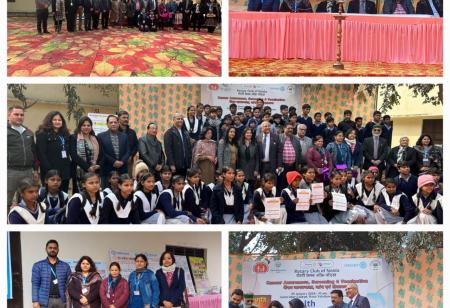

Health advocates have long argued that prominently displayed pictures of what consumption of tobacco can do to humans — including some grotesque depictions of tumours — help drive home the message more powerfully and effectively
The Supreme Court last Monday stayed an order of the Karnataka High Court, which had in December 2017 struck down central Rules based on which 85% of the area of tobacco packs has been covered by health warnings since April 2016.
“Health of a citizen has primacy and he or she should be aware of that which can affect or deteriorate the condition of health,” the Supreme Court said. “Deterioration may be a milder word and, therefore, in all possibility the expression ‘destruction of health’ is apposite,” the court said.
Health advocates have long argued that prominently displayed pictures of what consumption of tobacco can do to humans — including some grotesque depictions of tumours — help drive home the message more powerfully and effectively than smaller pictures or written warnings. India currently has some of the world’s most stringent rules on pictorial warnings on tobacco packets.
How did it begin?
Five months after the government of Prime Minister Narendra Modi came to power in May 2014, the Ministry of Health notified amendments to The Cigarettes and Other Tobacco Products (Packaging and Labelling) Rules, 2008. It was mandated that “the specified health warning shall cover at least eighty-five per cent (85%) of the principal display area of the package of which sixty per cent (60%) shall cover pictorial health warning and twenty-five per cent (25%) shall cover textual health warning and shall be positioned on the top edge of the package and in the same direction as the information on the principal display area…”
The Rules were to come into effect from April 1, 2015. There were cries of outrage from the tobacco industry, and less than a month later, Health Minister Dr Harsh Vardhan was moved out of the Ministry. Soon afterward, the Lok Sabha Committee on Subordinate Legislation (CoSL) started to examine the government’s October 2014 notification on the 85% warnings.
Did the Rules come into effect from the appointed date?
No. In its interim report tabled in Parliament in March 2015, the CoSL “strongly urged” the government to keep the notification in “abeyance” until it had examined various aspects of the Rules in greater detail. The government agreed, and the move for which India was being internationally applauded, was postponed indefinitely. Health Minister J P Nadda assured at multiple fora that he was a firm believer in taking everyone along, and that the government would like to wait for the Committee to make a considered decision before going ahead with the 85%, picture-dominated, warnings on tobacco packets.
So, how did the notification finally come into effect?
As the matter dragged on, a group of activists approached the Rajasthan High Court, which, in July 2015, asked the Centre and the state government to immediately implement the 2014 Rules. “After hearing the learned counsel appearing for the petitioner and considering the research as well as orders passed by various High Courts and the Supreme Court, we find it imperative, and in larger public interest, to stay the operation of the corrigendum… The Rules of 2014 will come into force immediately, and will be enforced by the Centre and the Government of Rajasthan,” the order, passed by a two-judge Bench of the High Court on July 3, 2015, said.
The Health Ministry filed an affidavit asking for six months’ time for the tobacco industry to prepare. Thus was reached the new date of implementation of the warnings — April 1, 2016. The notification came into effect on that date, exactly a year after it was originally supposed to. In the interim, the CoSL tabled its final report in the Budget Session of Parliament in 2016, recommending 50% warnings. But the die had already been cast.
So, was the battle over?
Not quite — even though the impact of the pictorial warnings appeared to be clear very soon. The Global Adult Tobacco Survey (GATS) 2016-17, released by the Ministry of Health and Family Welfare showed that 62% of cigarette smokers and 54% of bidi smokers had thought of quitting because of the 85% warnings on the packets. And 46% of smokeless tobacco users had thought of quitting because of the warnings on smokeless tobacco products. Such tobacco control efforts have saved 81 lakh lives in India, as per GATS-2.
According to a study supported by the Health Ministry and the World Health Organisation, Economic Burden of Tobacco-Related Diseases in India, the estimated total costs attributable to tobacco use was a staggering Rs 1,04,500 crore in 2011 — 12% more than the combined state and central government expenditure on healthcare in that year, and 1.16% of India’s GDP.
However, the tobacco industry approached the Karnataka High Court, where it argued that no correlation had been established between tobacco and the diseases depicted on the packs, and that the industry’s right to conduct business was being unfairly affected because of the warnings. The court found merit in the contention, and ruled that India should go back to the 40% warnings that existed before the notification of the 85% Rules.
And what did the Supreme Court say?
The government made a powerful case in favour of larger warnings. Attorney General K K Venugopal cited reports from the World Health Organisation to describe tobacco as the “most dangerous thing in the world”. The three-judge Bench led by the Chief Justice of India said: “Though a… submission has been advanced… that it will affect their business, we have remained unimpressed… as we are inclined to think that health of a citizen has primacy and he or she should be aware of that which can affect or deteriorate the condition of health…”
Source: Indian Express





